The kitchen is primarily a place where food is prepared. Consequently, the heat from the stove, steam, splashing water and all kinds of odors are constantly present here.
Choosing a suitable interior, it is necessary to attend to not so much the pleasant appearance of its components as their practicality. This is especially true for wallpaper.
Wallpaper in the kitchen
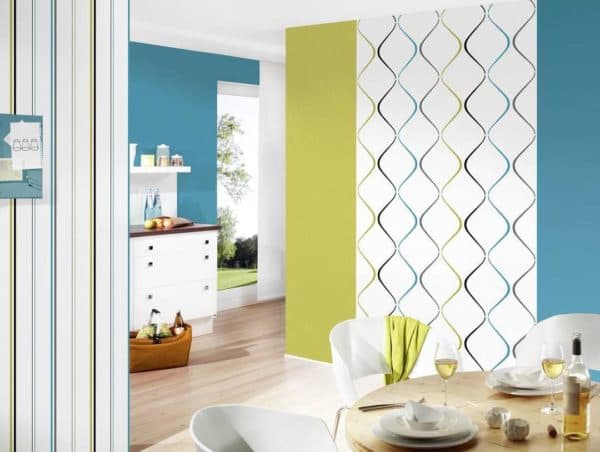
Beautiful wallpapers in the kitchen: they are still indispensable and in demand since twenty years ago
The main advantages of wallpaper, traditionally used for pasting kitchen walls, are immunity to odors and ease of maintenance. Paper options will definitely not work here. Other materials are preferred. So which wallpaper to choose for the kitchen?
Washable
Washable wallpapers are most popular in places where wet cleaning of walls is necessary.
What are they:
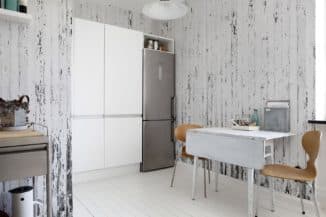
- metallized, on which there is porous paper, covered with a layer of aluminum foil, paint or a decorative pattern. They are completely impermeable to air and are applied only on a perfectly flat surface;
- glass fiber wallpaper of various density and thickness, perfectly hides irregularities and cracks in the walls, waterproof and environmentally friendly, resistant to steam and temperature changes;
- acrylic, which goes to multi-layer acrylic. They usually have a bulky pattern and a soft foam top cover;
- vinyl – made of vinyl, the most practical and popular material, the top layer of which is a protective film that protects the pattern and surface of the carpet from scratches and repels moisture;
- non-woven, the material of which is cellulose fiber. Washable non-woven wallpaper can be admitted in one layer, and also be two-layer – with a second layer of vinyl, paper, fabric or, again, non-woven, or produced for painting with waterproof paint.
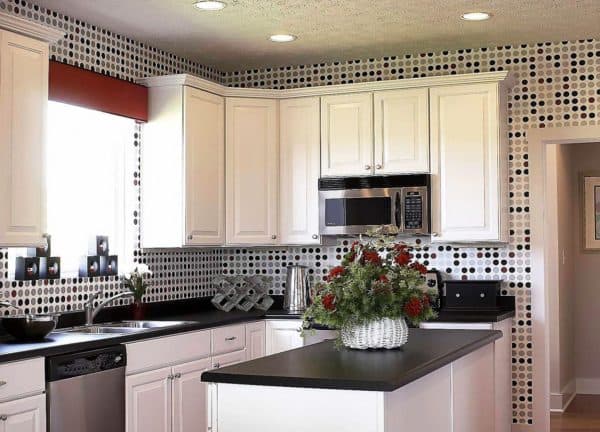
The main advantage of these wallpapers is that they can be washed.
Advantages:
- rich assortment, thanks to which a potential buyer has access not only to a variety of colors, patterns, textures, but also the types of wallpaper themselves.
- unlimited design possibilities. The material intended for painting, in combination with a waterproof coating, is perfect for creating an original pattern, and the combination of colors of liquid wallpaper helps to create various abstractions;
- resistance to damage. Such a coating is not afraid of steam, water and drafts, neither fungus nor mold forms on them, and all dirt can be removed by wiping with a damp sponge;
- reasonable price and opportunities for a potential buyer to choose the optimal combination of price, style and quality, since the choice is great, you can combine wallpaper;
- durability. With proper gluing and subsequent regular maintenance, washable wallpaper can last from ten to fifteen years.
At the same time, before deciding to purchase washable wallpaper, you need to know about some of their shortcomings:
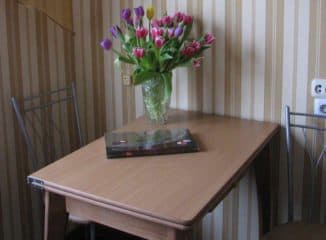
- the process of gluing such wallpaper is very complicated; each type has its own rules. Some will have to be stretched, so that after the glue dries, gaps may form between their canvases, some may tear, etc.;
- a sharp drop in temperature and humidity for some materials is a serious test, subsequently causing deformation;
- As a rule, the materials used for washable wallpaper do not allow air to pass through, as a result, its natural circulation stops, and the walls do not breathe.
The liquid wallpaper
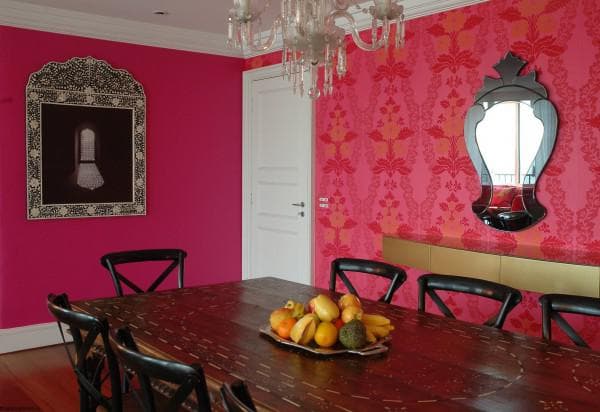
Liquid wallpaper, when used correctly, looks very impressive.
Liquid wallpaper includes cellulose and cotton fibers, high-quality dyes and an adhesive base. Outwardly, it is a powder that is diluted with a certain volume of water and applied with a spray gun or roller to the surface of the walls. However, sometimes they are produced immediately in liquid form.
The list of their competitive advantages includes:
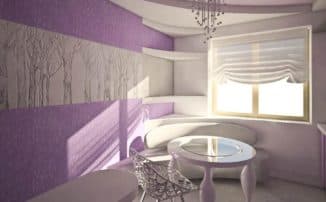
- extreme ease of use. There is no need to mark the walls, adjust the joints or cut the gaps, and also spread the glue on the strips and wait for them to dry out a little. The very preparation of the surface of the walls is minimized here. No alignment required. Liquid wallpaper will perfectly hide small defects (up to 1 cm deep), fill gaps and cracks, especially in the places where skirting boards, platbands, frames, and sockets fit. And in order to create a perfectly flat surface, it is enough to first prime the walls (it is desirable that the primer was produced by the same company as the liquid wallpaper);
- cost-effective and reusable. In this case, the wallpaper is removed from the wall with a staple, placed in a special container, re-diluted and reapplied. In addition, it is not necessary to re-glue the damaged wallpaper, it is enough to paint over the defect with a thin layer of the appropriate composition;
- environmental friendliness. All components are safe for health and do not cause allergic reactions;
- complete fire safety. Wallpaper is very difficult to set on fire, and when it burns, they do not emit harmful substances into the air. “
- Moisture permeability combined with moisture resistance. The first allows the walls to “breathe” and prevents the appearance of mold and mildew, the second facilitates maintenance;
- Resistant to dirt. Dust does not accumulate on such a surface. However, covering the walls after applying the wallpaper with a special varnish helps to enhance this property.
There is only one drawback of liquid wallpaper: they are unstable to mechanical damage. Any sharp object will scratch them. However, the simplicity of restoration of the damaged area makes this disadvantage not so significant.
No matter how high-quality and durable washable wallpaper is, it should be borne in mind that in places most exposed to humidity and high temperatures – above the stove and sink – they will not protect the walls. Tiles or other finishing materials will be more in demand here.
Textile
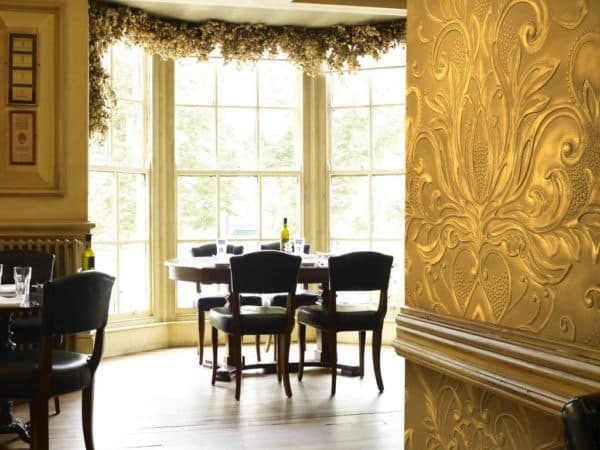
Textile wallpapers look luxurious. But it is better to use them in the dining room, since they very much absorb odors.
Textile wallpaper is either one solid canvas, or a paper, foam or non-woven base on which the threads are fixed. Such wallpapers have been known for a long time and were originally called damask.
Currently, they are made from silk – as a rule, not natural (it would be too expensive), but from viscose with a small addition of silk, velor and felt – based on microfiber, polypropylene foam, acrylic or also felt.
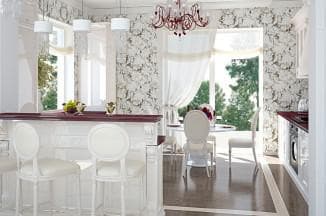
The main advantage of textile wallpapers is their aesthetics. And the point is not only in a more noble appearance, but also in the invisibility of the joints between the panels. However, almost all types of textile wallpaper, including linen with antistatic impregnation, strongly attract dust.
Textile wallpaper is very difficult to clean: only dry processing is permissible. Fresh dirt can sometimes be wiped off with a damp cloth, but usually only a soft brush and vacuum cleaner are used for cleaning.
Bamboo

Bamboo wallpapers go well with modern style or ethno designs
Bamboo wallpapers are made from dried, thinly cut and glued bamboo stems to fabric. Their color range depends on the type of plant and the place of its growth, but, as a rule, ranges from white to golden-greenish.
Their advantages:
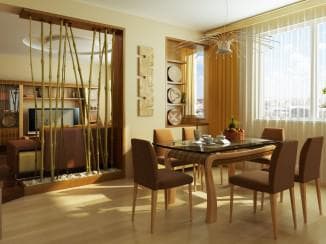
- bamboo wallpaper in the interior brings a natural touch and is environmentally friendly;
- perfectly pass steam and air, and their air gap retains heat;
- the density of the gluing allows them not to absorb dust;
- they create excellent sound insulation;
- they are durable and can last for about ten years;
The procedure for gluing them is complicated, it requires the choice of the right glue, they are attached either to liquid nails, or in a room with a stable climate they are pressed into the putty, do not fit well together.
There is also no need for special care for bamboo wallpaper: it is enough to vacuum it every six months. At the same time, they do not tolerate sunlight well and fade over time, are unstable against moisture from physical exposure.
Cork
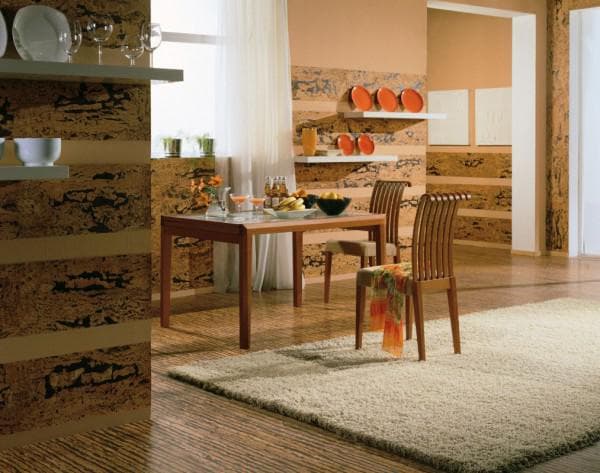
Cork wallpaper is a natural and environmentally friendly material, but just like textile wallpapers, they absorb odors.
Cork wallpapers are environmentally friendly, and their porous structure does not interfere with air exchange with the walls, which protects against waterlogging, mold and mildew.
Cork wallpapers have undeniable advantages:
- they are resistant to fire, do not absorb odors and retain their original appearance for decades; provide good sound insulation;
- resistant to chemicals, humidity and high temperatures;
- and thanks to a velvety texture and a variety of patterns, pleasant to the touch, they are able to decorate any interior;
At the same time, the cost of cork wallpaper is high, and they themselves are quite sensitive to strong pressure and sharp objects.
Cork wallpaper can hardly be called a suitable option for the kitchen. Their aesthetics do not always “outweigh” practicality. However, they will perfectly fit into the interior.
Wall pattern and interior style
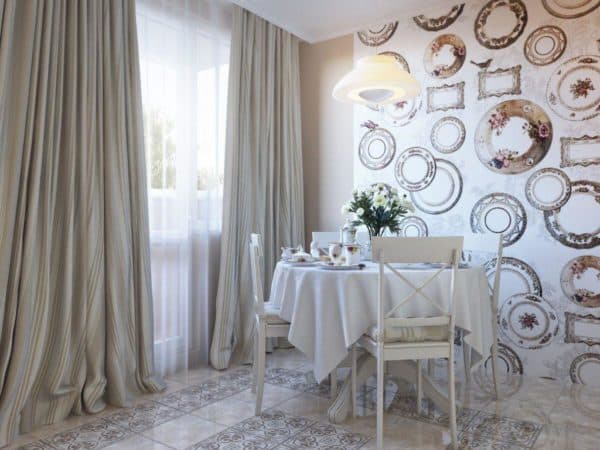
This is truly a “kitchen” print
When choosing a pattern for wallpaper, there is a “golden” rule: large patterns and bright colors visually narrow the space, small patterns and light colors increase it.
Otherwise, to choose the right color and pattern, you need to decide on the style of the future kitchen.
The clarity and simplicity of modernity
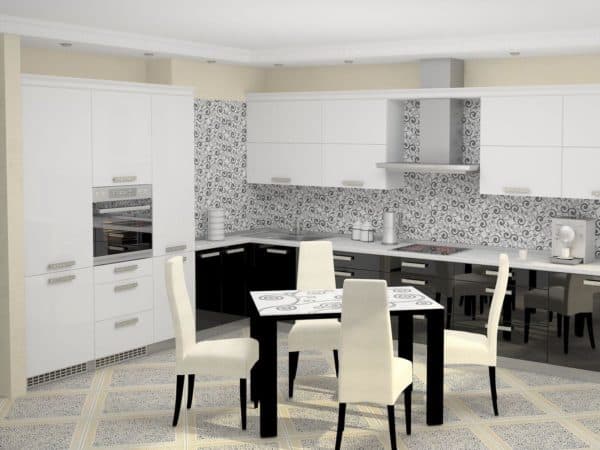
Modern styles often play on white and black
Hi-tech is distinguished by straight lines and clear tones without smooth transitions. There can be no question of any patterns and play with texture. Only perfectly smooth, non-distracting walls. Only cool shades of white, yellow, green, gray or beige.
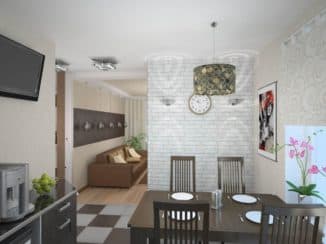
A loft designed to imitate the atmosphere of a warehouse, factory or factory converted for housing, either does not imply wallpapering the walls of the kitchen at all, or requires a specific pattern from the wallpaper – with imitation of brickwork, pipes, rough plaster. I. of course, saturation and deep color.
Minimalism, also characterized as “stylish emptiness,” requires light natural tones and midtones. The most preferred color here is white. However, so that the walls do not seem too soulless and cold, it is recommended to “dilute” the general atmosphere with darker contrasts – countertop, oven panel, etc.
Coziness and homely atmosphere
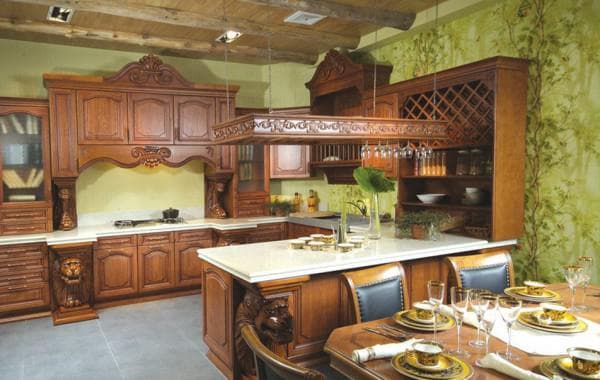
This is how you can beat the ethnic styles of country or Provence. Resembles a forest
Provence – combines two styles: classic and country, and the nobility of the first is perfectly combined with the ease of the second. The colors here are calm – mustard, olive, lavender, wheat, beige, sand. Shades of blue, terracotta and white are muted.
There is no place for plain wallpaper and cold tones. But an unpretentious pattern – a vertical strip, flowers or a cell – is a prerequisite. Provincial motives are also relevant for kitchen design in Provence style – the image of houses, animals, village utensils, as well as all wallpapers with images in the style of a European cafe.
Modern materials that imitate antiquity also give a good effect. For example, silk-screen printing, imitating cracks and abrasions.
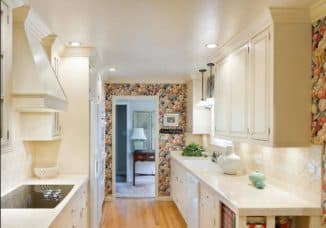
Country – designed to create the atmosphere of a home. Calm muted shades of green, beige, terracotta, soft yellow brown, pale pink, crimson and blue are used. The atmosphere of naturalness is emphasized by natural materials and wallpapers that imitate them. Patterns in a small flower are relevant. By the way, such wallpapers are usually produced in the style of the country of origin, so that the American pattern is very different from the European or Eastern one. With this design, the walls do not need additional finishing at all.
The design of the chalet kitchen, whose name comes from the houses in the Swiss mountains, aims to emphasize the simplicity of the rustic style. Patterns imitating natural dark or aged wood, and alpine motifs – with appropriate vegetation, animals, mountain landscapes are in use. Pastel, yellow, orange, terracotta and beige tones are acceptable.
A combination of luxury and elegance
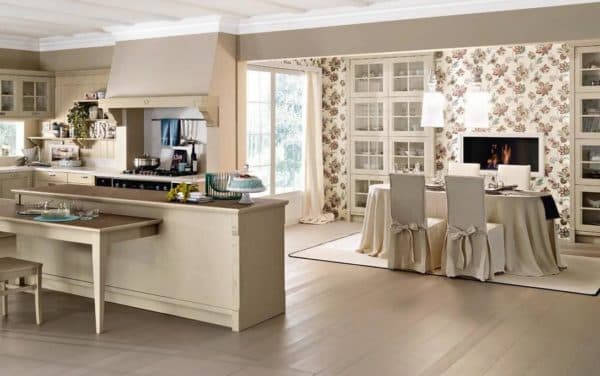
You can also combine plain wallpaper with a print, thereby dividing the room into zones
In the classic, with its laconicism, straight lines, lack of bright drawings. Calm pattern – with plant motifs or vertical stripes – is combined here with noble material.
Silk-screen printing of all shades of brown with a golden pattern is relevant. Blue, gray interior, purple, pink and pastel shades are quoted. The pattern can be convex, but at the same time dim and muted. Possibility of pasting the kitchen in the classic style and with plain wallpaper for painting. Burgundy, green, beige or white colors will be relevant here.
Modern – with smooth lines and some ornateness. The color range can be light or brown, reddish or creamy. Vegetable motifs are relevant; luxurious drawings; the black and white range of wallpapers is very relevant, allowing you to focus on colored interior items, for example, a red wall clock or a bright burgundy teapot.
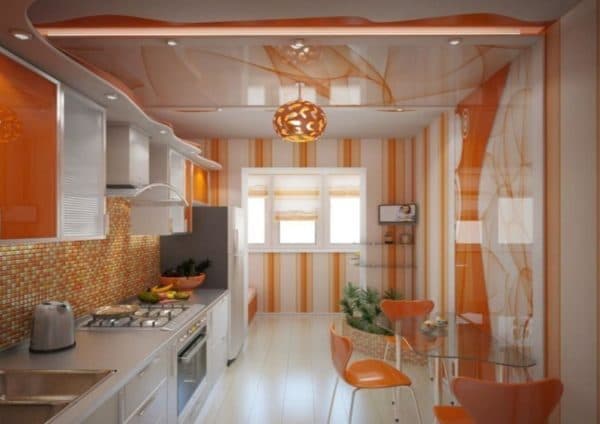
Modern kitchen option
Art interior – luxury and sophistication. Blue, white, gold, purple, burgundy colors, warm shades, as well as the unobtrusiveness of the ornament applied with mother-of-pearl, stripes, ethnic motifs, and a geometric pattern are used.

Design of wallpaper for the kitchen in the art deco style. Check out the papered ceiling experiment – stylish
Kitchen design in the English style is most often performed in noble shades – brown, ocher. Wallpaper ornament includes floral patterns or curls. Imitation of plaster is also possible.
Antiquity gloss
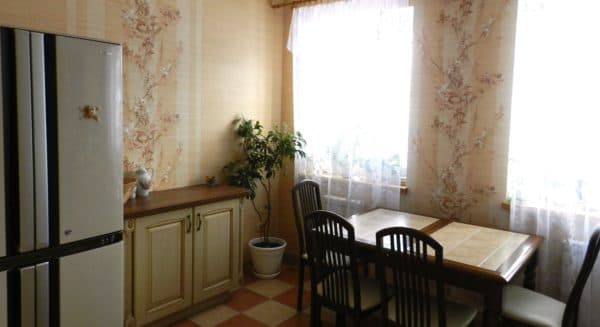
In general, any wallpaper with flowers causes a note of nostalgia for many.
Vintage focuses on emphatically bright colors. All kinds of flowers, plants, birds can be depicted here as pictures. A strip, polka dots, a cell, as well as drawings of a gastronomic theme: cakes, fruits, teapots, plates, coffee cups are acceptable.
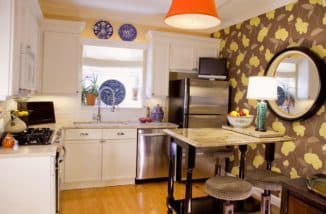
Retro – creates an atmosphere of the 50-60s of the twentieth century. The color scheme here can be any, but the contrast of bright and muted shades gives the interior individuality. Most of the drawings are dominated by flowers and plant motifs.
Pop art is characterized as an expressive style. Here, non-trivial color mixing and simplicity of shapes are in the lead. Wallpapers are usually light, which allows them to serve as a background for any interior decor. At the same time, contrasting geometric shapes stand out sharply against the light background. Bright posters, etc.
National character
Interior design with wallpaper dedicated to either a specific theme or a specific national color is characteristic of the following styles:
Japanese. Natural natural colors are relevant here – ocher and green, imitation of bamboo masonry, ethnic motives and calligraphy, exotic flowers and birds.
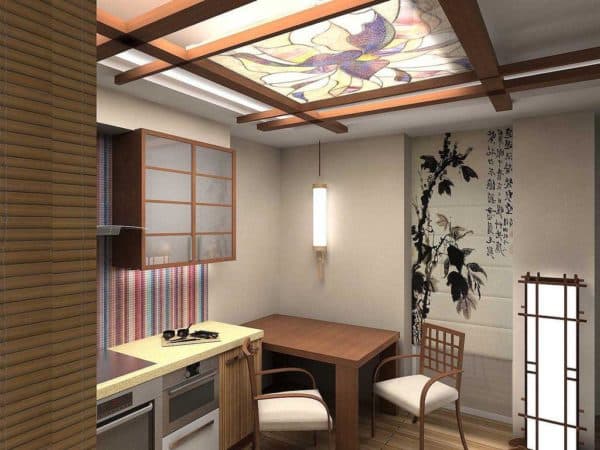
Japanese style is very discreet
Marine – white-blue gamut is actual. But bright dots of silver, coral, citrus and golden colors are also acceptable. Ornament is everything related to the sea and ships.
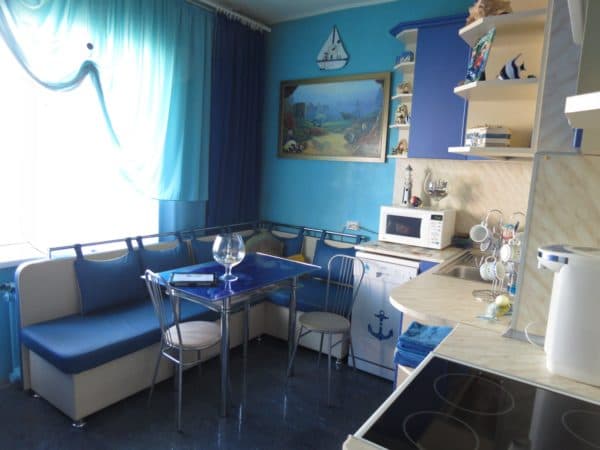
Blue gives coolness
African – colors associated with the desert are in demand: light yellow, reddish orange, sand, terracotta or savannah: light green, bright green, olive, sky blue. And all this is combined with typical African prints: zebra or tiger stripes, crocodile skin, spots of leopard skin or giraffe skin, weaves of small snakes, rock paintings, bamboo stems, palm leaves.
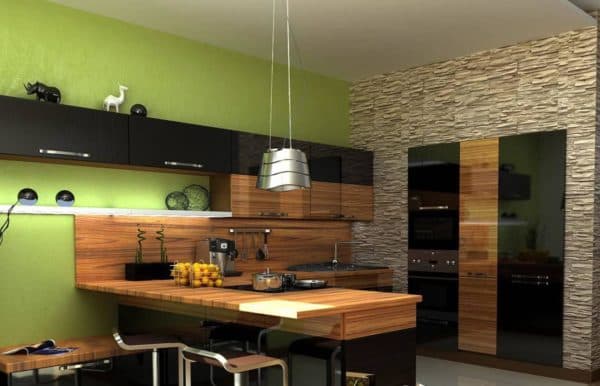
African – very cocky
Russian – focusing on the atmosphere of the Russian hut, popular prints, with images recognizable all over the world: Khokhloma patterns, matryoshka dolls, samovars, bears and balalaikas.
To correctly determine the color of the wallpaper, it is recommended to hang sheets of paper painted in certain colors on the walls. A few days later it will become clear. Which colors are irritating, which ones are soothing, which ones are mood-enhancing.
Care
Choosing the right wallpaper is only half the battle. Proper care of them is important. Usually it is already indicated in their instructions. Here you need to focus on the icon – a wavy line:
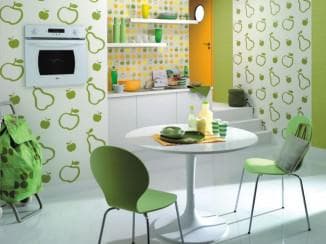
- one line indicates moisture resistance. Fresh dirt can be easily erased from such wallpaper with a damp cloth, however, scrubbing old stains and directly washing are unacceptable here;
- two lines – washable wallpaper. They are perfectly wiped with a damp cloth or sponge without the use of detergents;
- three are super-washable. Such walls are wiped with a well-wrung out cloth soaked in soapy water. Also, not the entire surface is washed, but only clearly pronounced spots;
- three lines combined with droplets – an indication that the wallpaper can be washed perfectly with a damp cloth or brush and a mild detergent.
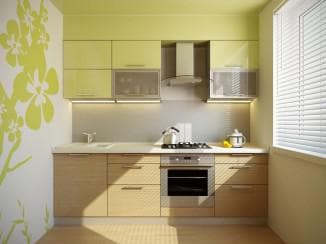
If the kitchen is covered with wallpaper for painting and covered with water-based paint. They can be easily wiped off with a damp, well-wrung out sponge. It is better to do this, starting from inconspicuous places. But the acrylic coating is washed with water with the addition of a mild detergent.
Wallpaper made from natural materials, as a rule, is treated with a dust-repellent composition or cleaned with a feather duster.
Naturally, abrasive products and metal sponges are unacceptable for such care.

Beautiful and properly selected wallpaper will be a decoration for the kitchen
It is not difficult to choose a wallpaper design, you just need to decide on the texture or structure, and also harmoniously combine with the overall concept of your kitchen.
